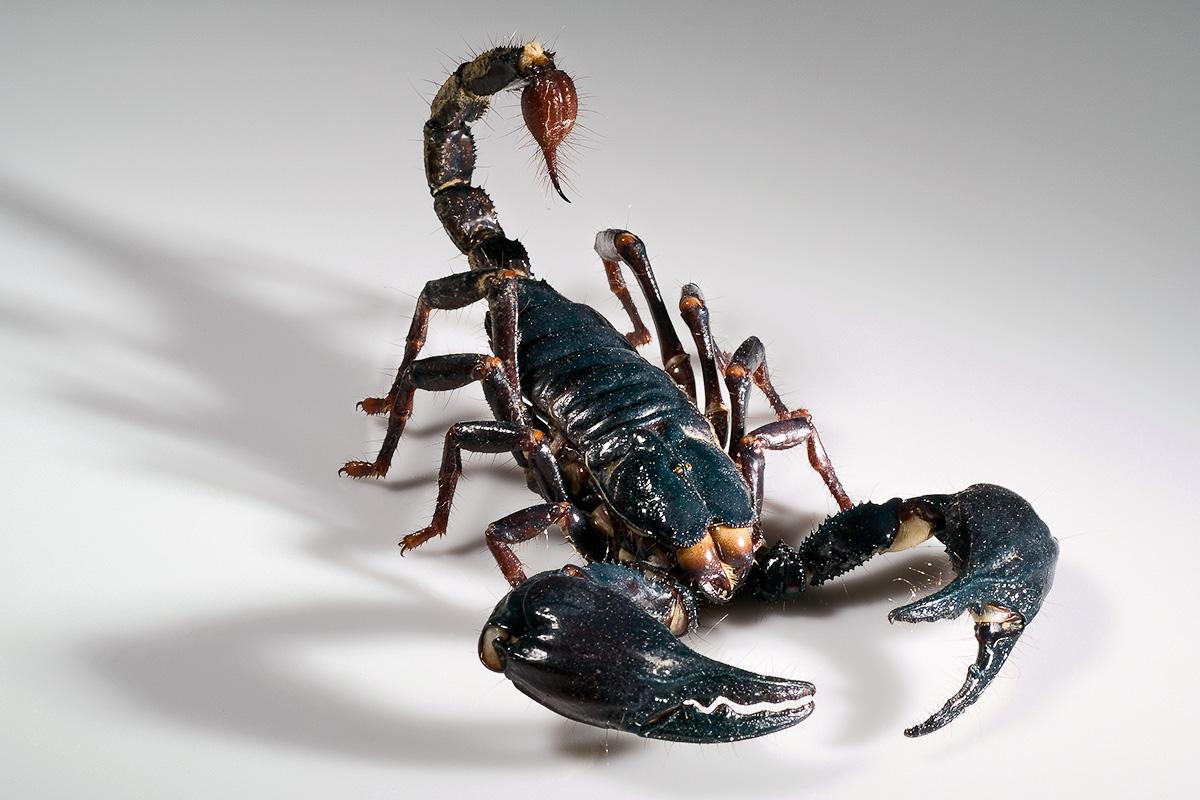The Arachnida and Myriapoda Collection comprises approximately 250,000 specimens, of which 5,110 are types. This is one of the largest and historically most significant collection of its kind in Europe. The collection is home to 20,600 ethanol jars, 7,400 dry specimens and 27,300 microscope slides. There are also smaller collections of sea spiders (Pantopoda) and horseshoe crabs (Xiphosura), as well as the stem-group arthropods, tongue worms (Pentastomida), velvet worms (Onychophora) and water bears (Tardigrada).
The geographical focus lies in Germany, Central Europe and the Balkan Peninsula. There are also important collections from Brazil, Australia, Indonesia and Japan, as well as collections from the former German colonies Namibia, Togo, Tanzania and Papua-New Guinea.
Digitisation
The type specimens of this collections have been uploaded to the searchable online database SysTax (Datenbanksystem für Systematik und Taxonomie).
The GBIF (Global Biodiversity Information Facility) project portal also holds information about the collection.
History
A large proportion of the collection comes from collecting expeditions in the 19th and early 20th centuries, e.g. material from the expedition led by Duke Adolf Friedrich of Mecklenburg to Central Africa, Leonhard Schultze’s travels to Namibia and neighbouring countries and Michelsen’s and Hartmeyer’s expedition to western Australia.
The collection contains historically significant arachnid material described by Carl Ludwig Koch and his son Ludwig Koch, as well as type material from former curators such as Ferdinand Karsch and Friedrich Dahl, and spider material from the famous French arachnologist Eugène Simon. There are a number of historical special collections such as Ferdinand Koenike’s water mites, or the myriapod collections of Karl Verhoeff and Otto Schubart. Notable material from more recent times include predatory mites from Wolfgang Karg, oribatid mites from the former curator Manfred Moritz and local (Berlin/Brandenburg) German spiders from Bodo von Broen.
Highlights
Camel spider
Camel spiders are not true spiders: they lack venom and the ability to produce silk. They prefer dry habitats and can run extremely fast. Some are a few centimetres long and in the countries where they are found there are often many irrational myths about how dangerous they are for people or animals.
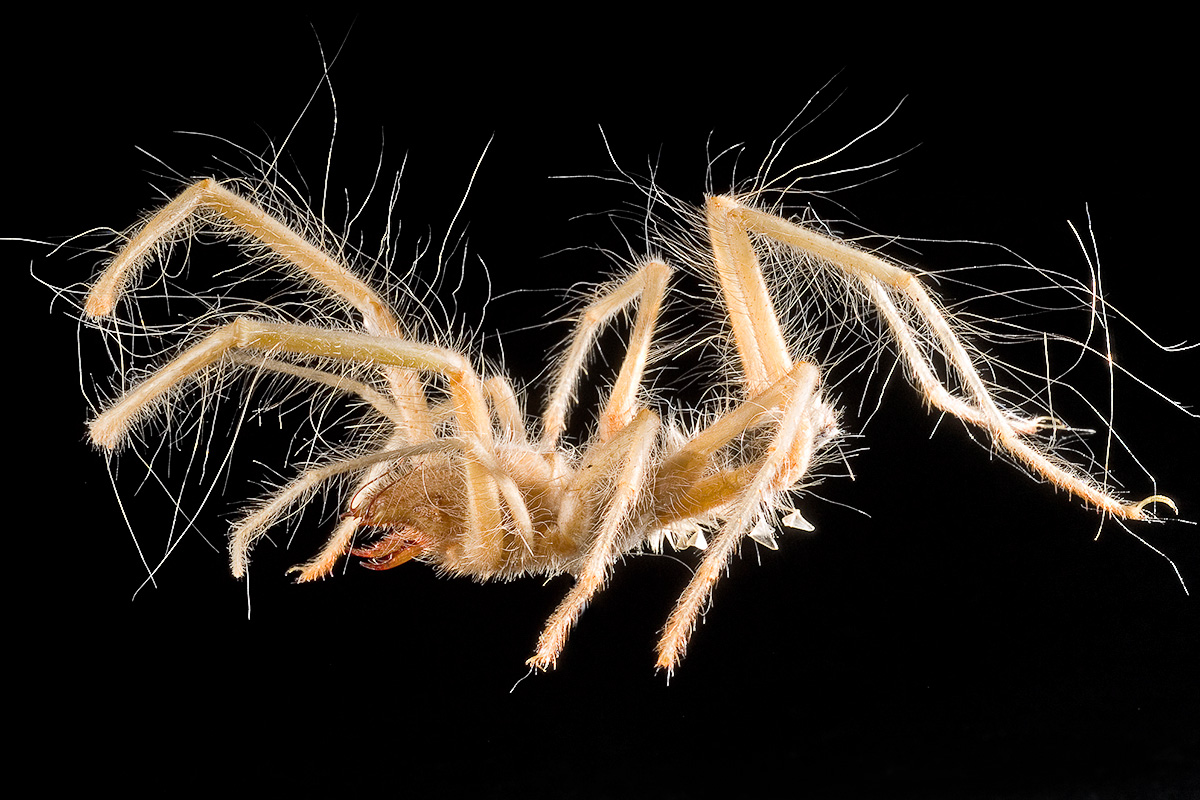
Giant centipede
This large relative of the centipede you find in our parks or gardens lives in tropical countries and can reach a body length of 30 cm. They are aggressive hunters, wrapping themselves quickly around their prey and are even capable of overpowering small vertebrates with the aid of their poisonous claws.
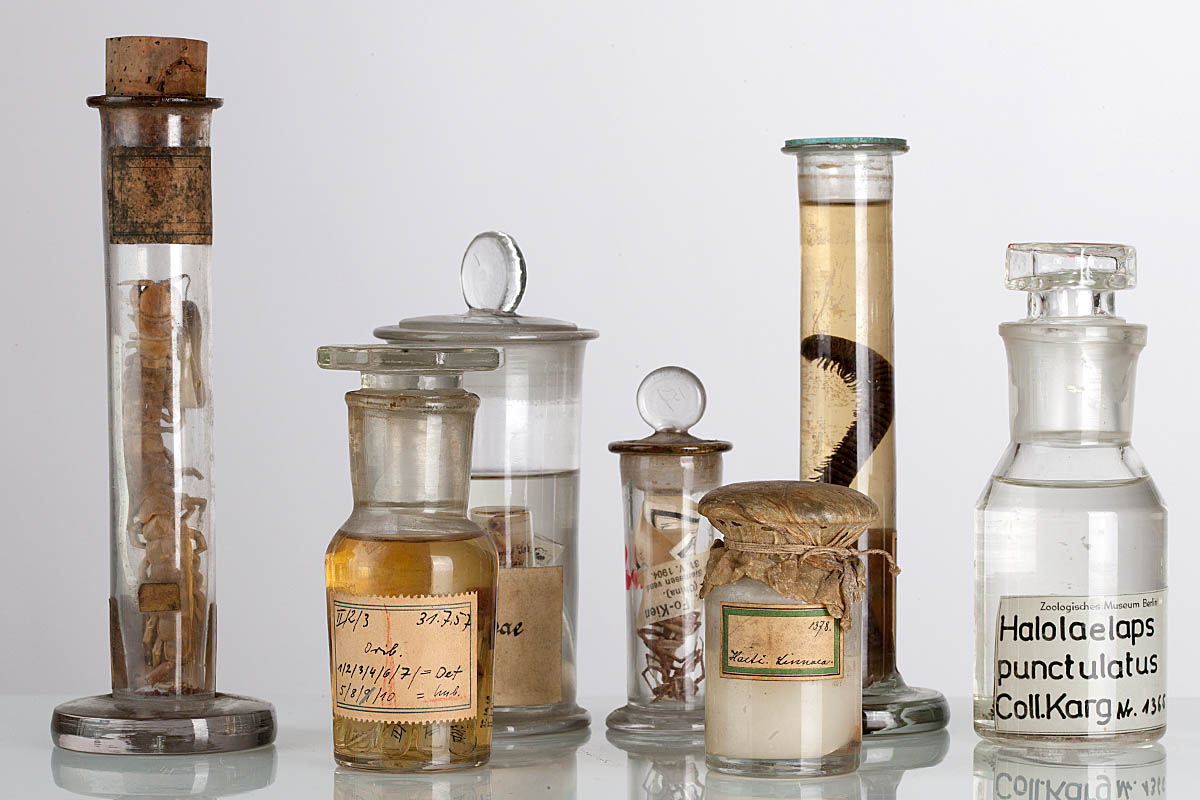
Orb weaver / Wolf spider
Orb weavers and wolf spiders are two examples of common spider families found locally in Germany. They nicely demonstrate different hunting strategies. Orb weavers build capture webs and spend much of their lives on their silken threads; wolf spiders are free-living hunters who actively chase prey on the ground.
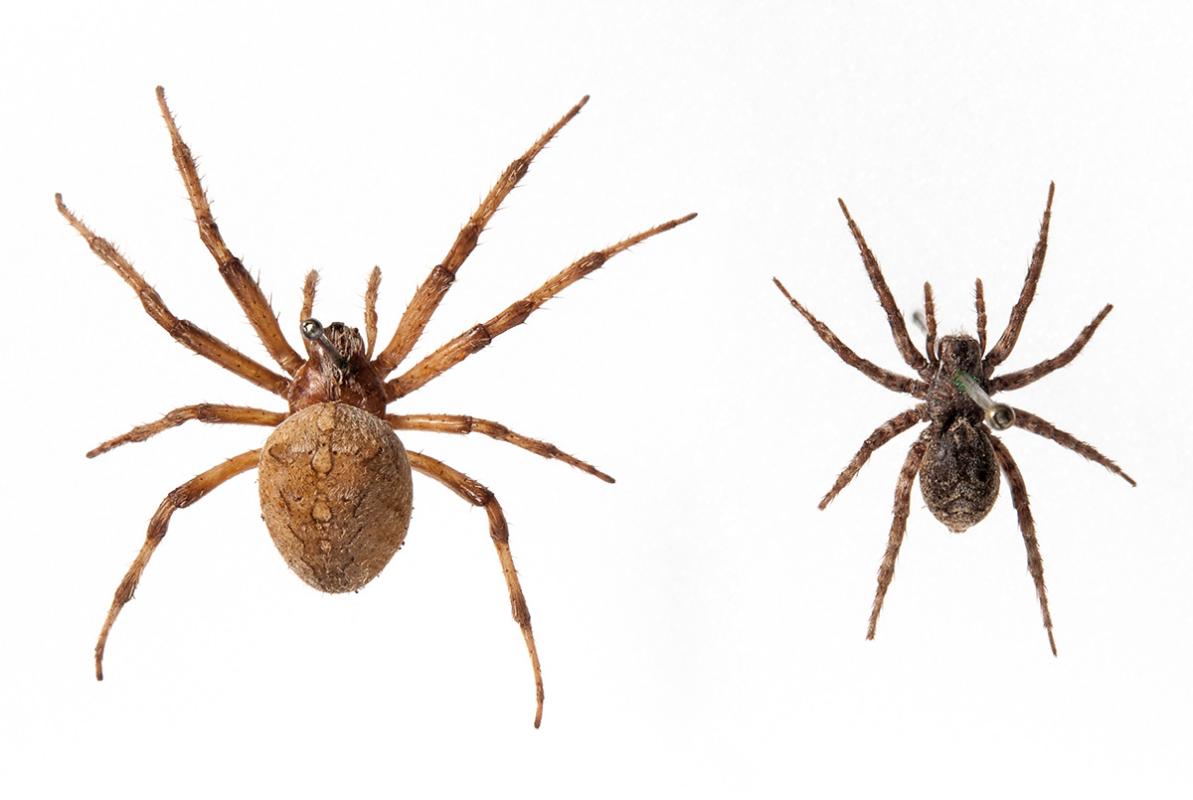
Aranea mucronatella (ZMB22081)
This orb weaving spider comes from Brazil and is a typical example of how scientific specimens are conserved in the museum. Several specimens of the same species are placed together with their label in a small vial containing 70% alcohol, which will then be placed in a larger jar.
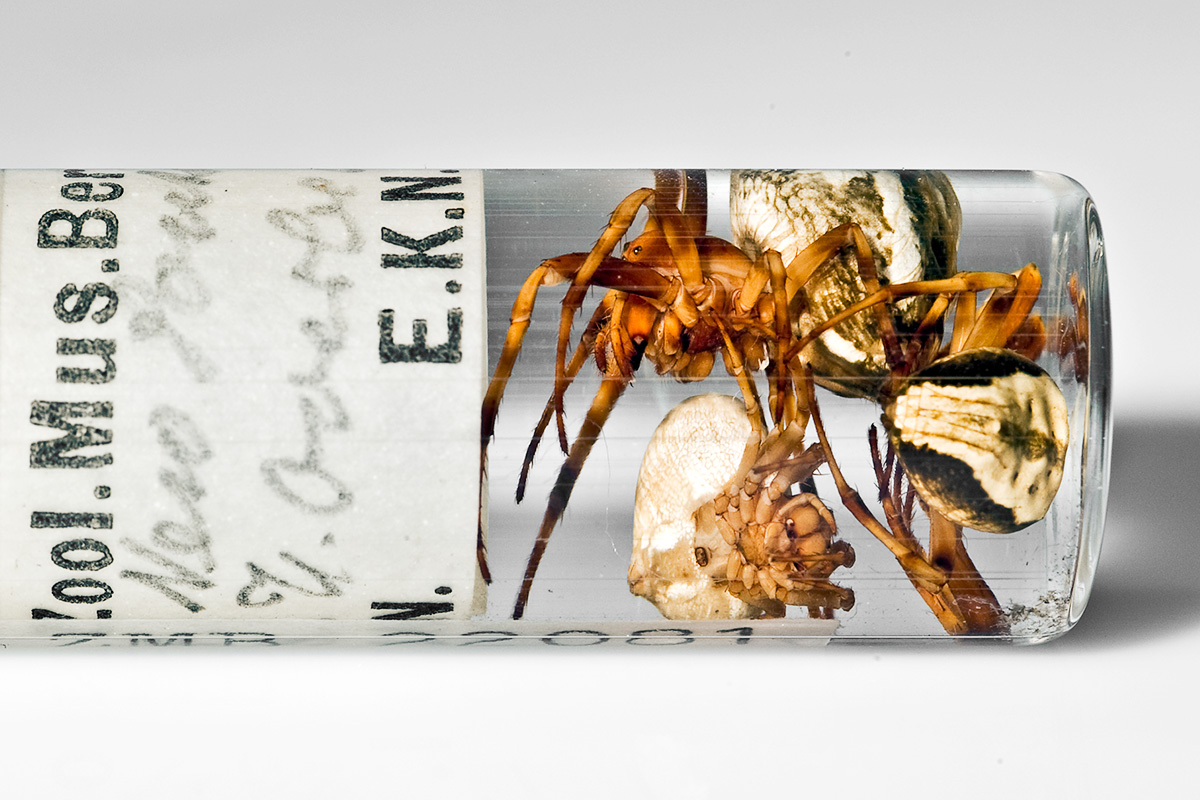
Rotknievogelspinne
The red-kneed tarantula is the best known example of its family, especially due to the fact that it is very popular among hobby arachnologists. This large and beautiful spider was collected so frequently from its its original home in Mexico that it is now a protected species and it is forbidden to import them anymore.
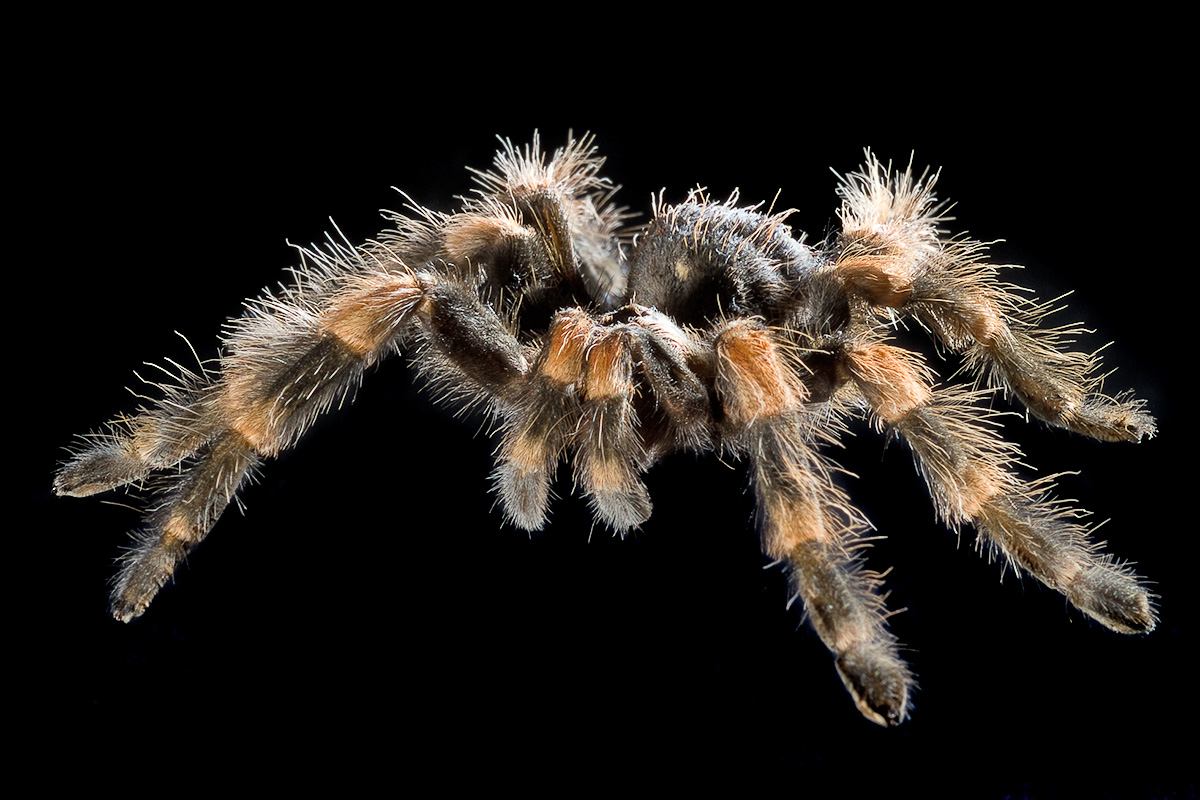
Research
Current research projects are mainly focused on the description of extinct arachnids and their comparison with extant relatives. The objective is to collect the most ancient evidence for the existence of orders and families so that they can be attributed to the appropriate geological period. The collection provides an expansive diverse resource of arachnids which can be compared to amber inclusions or even findings in 300 million year-old coal. The anatomy of arachnids and its significance for evolution and relationships between various arachnid orders is also a topic of research. The collection can accessed only after prior arrangement with the Curator or Conservator.
Library
The library of the Arachnida and Myriapoda Collection contains 19,800 books, monographs and reprints, as well as many e-publications.
